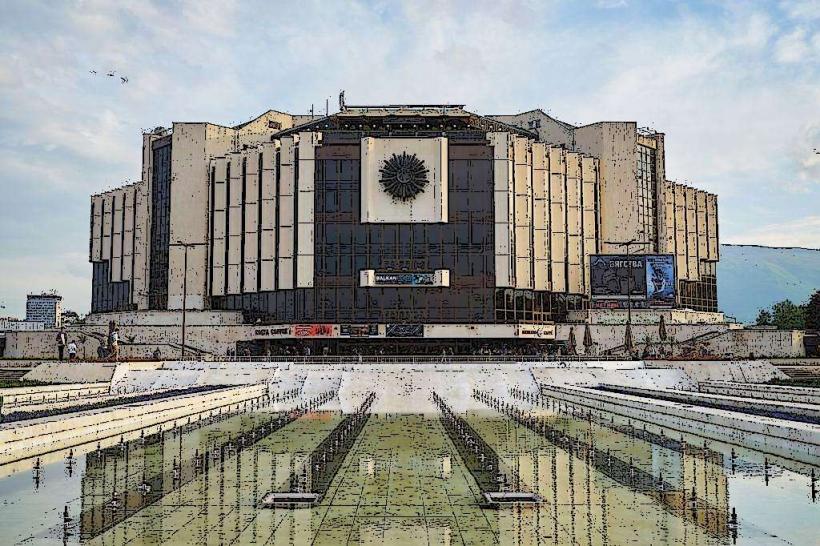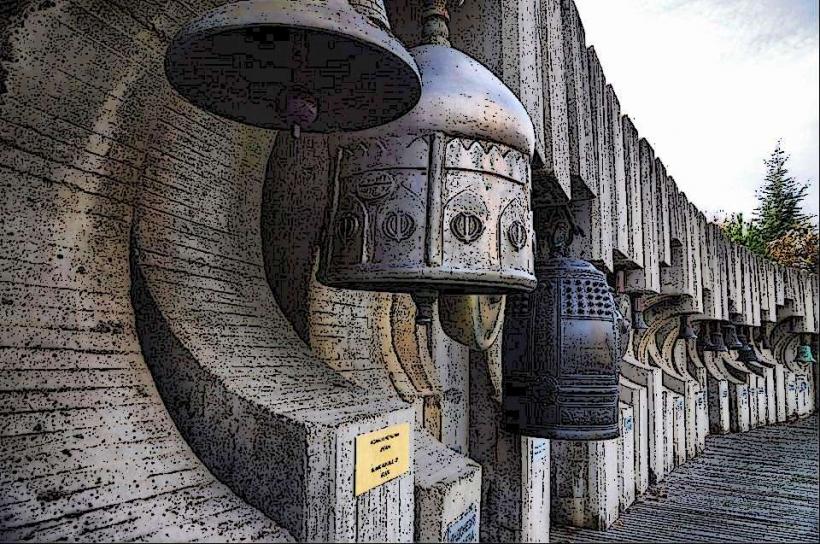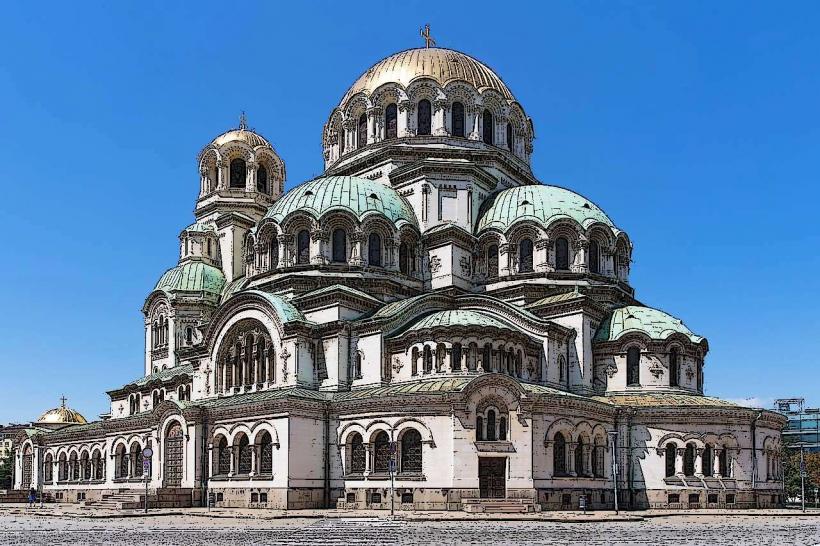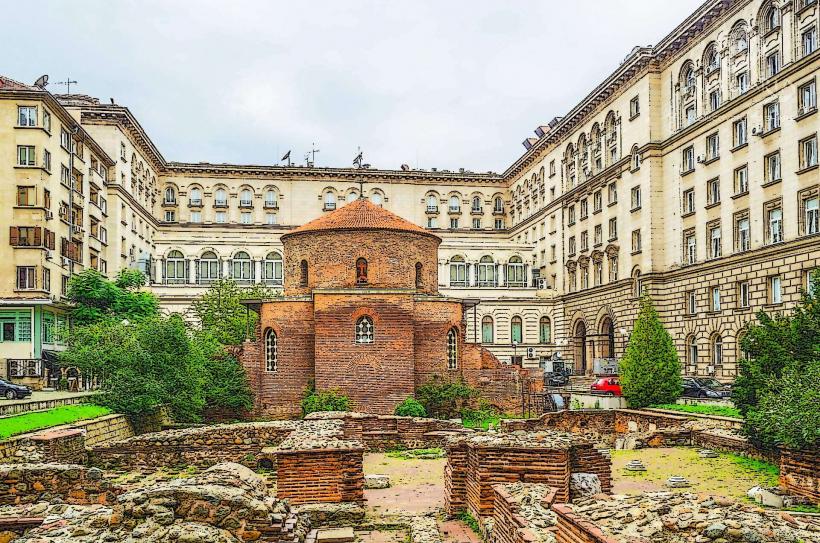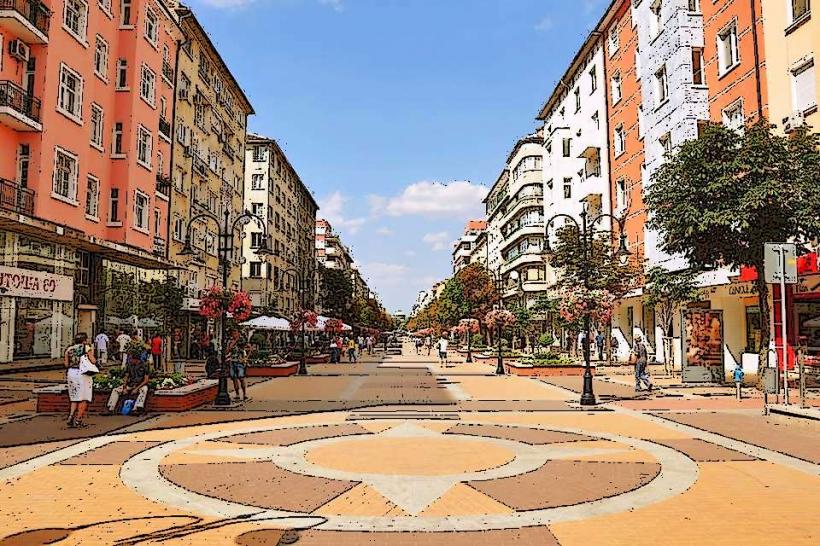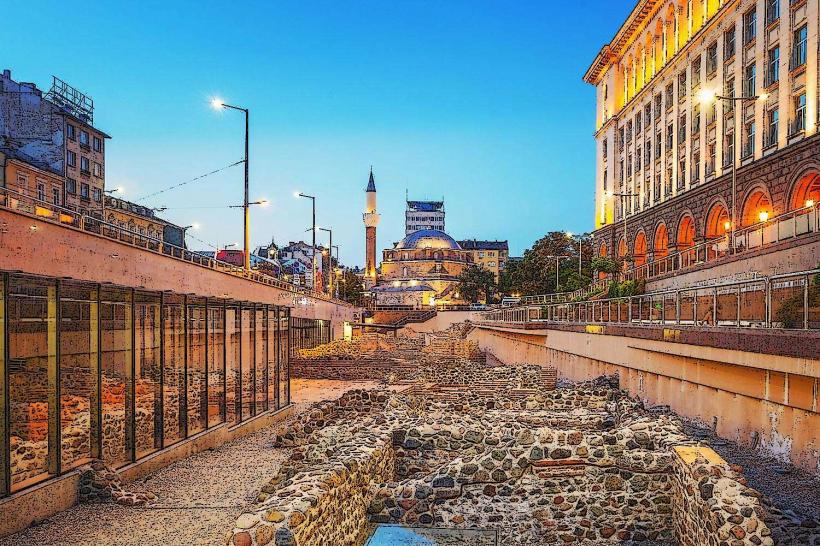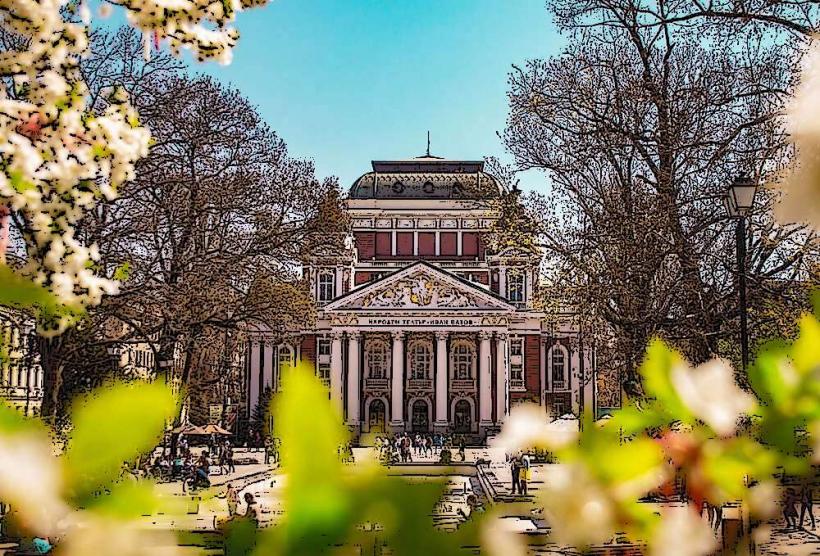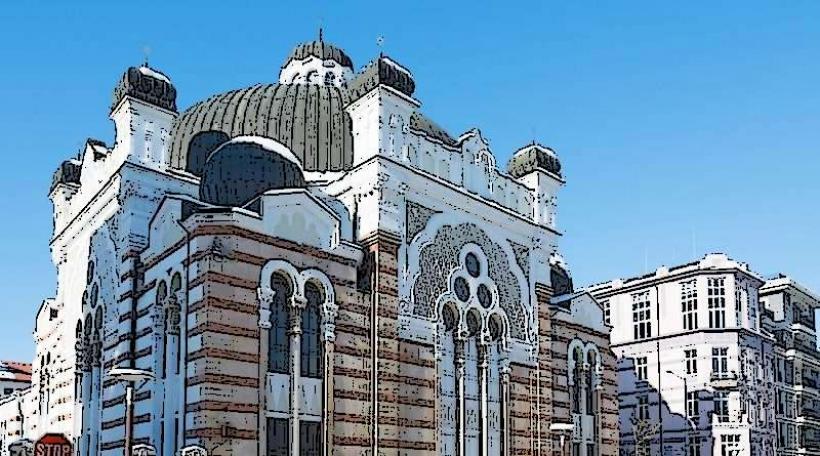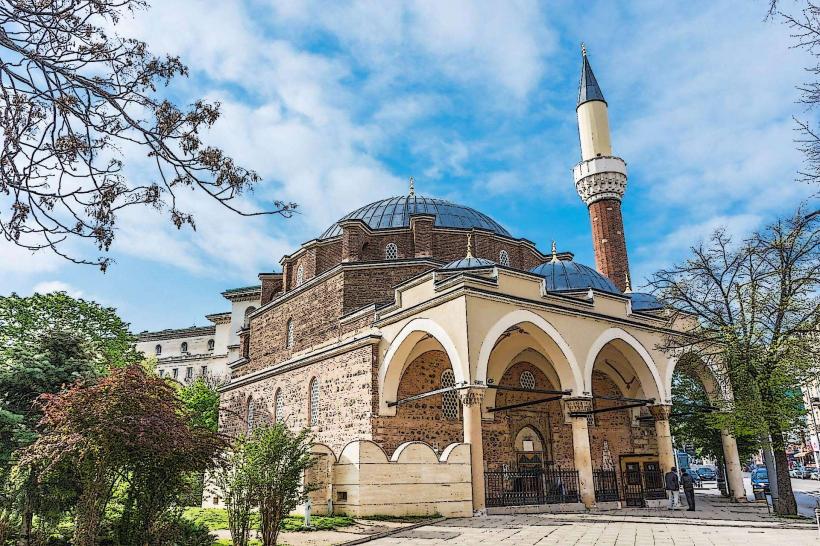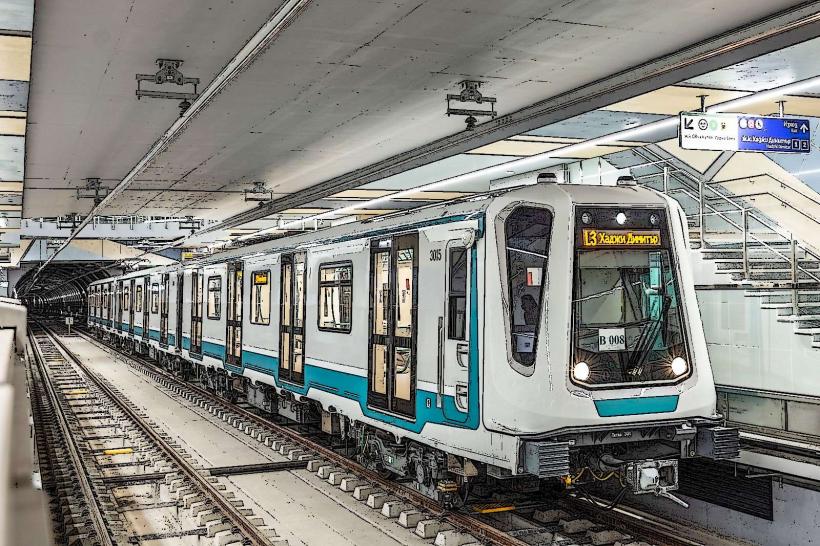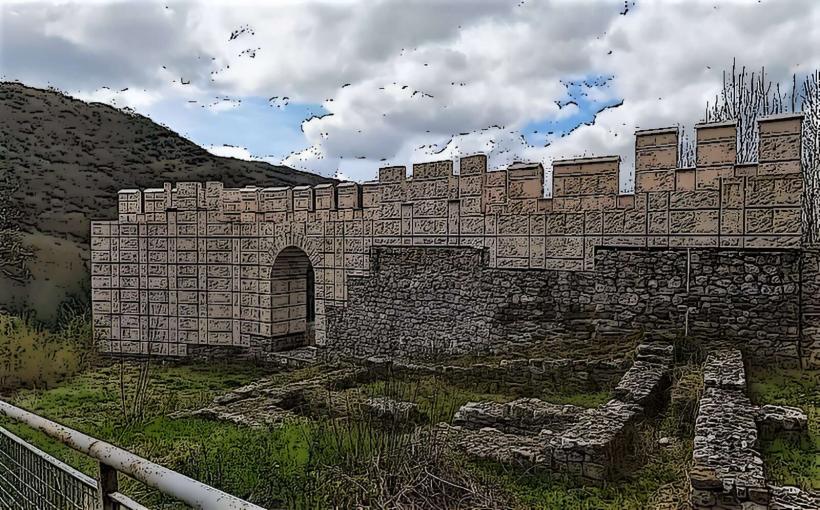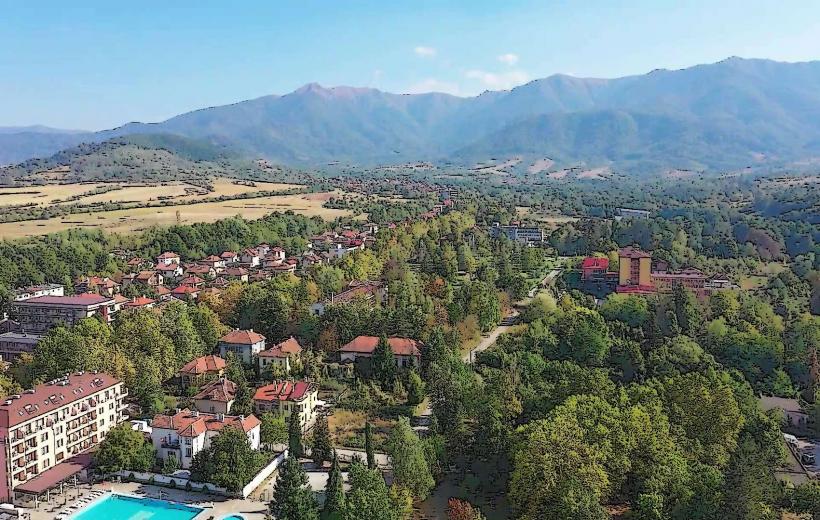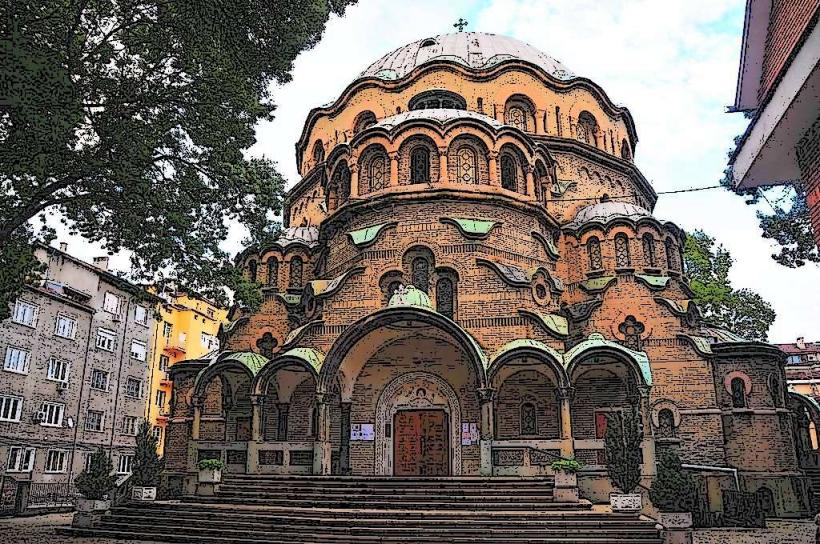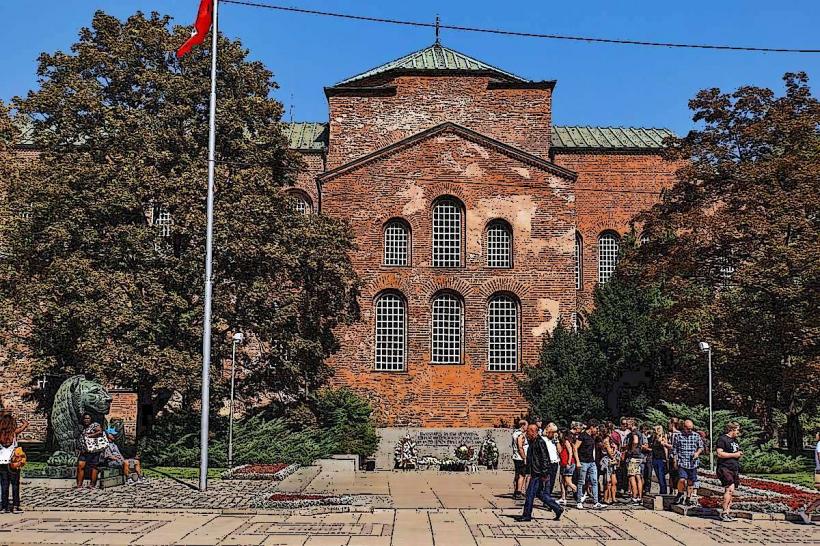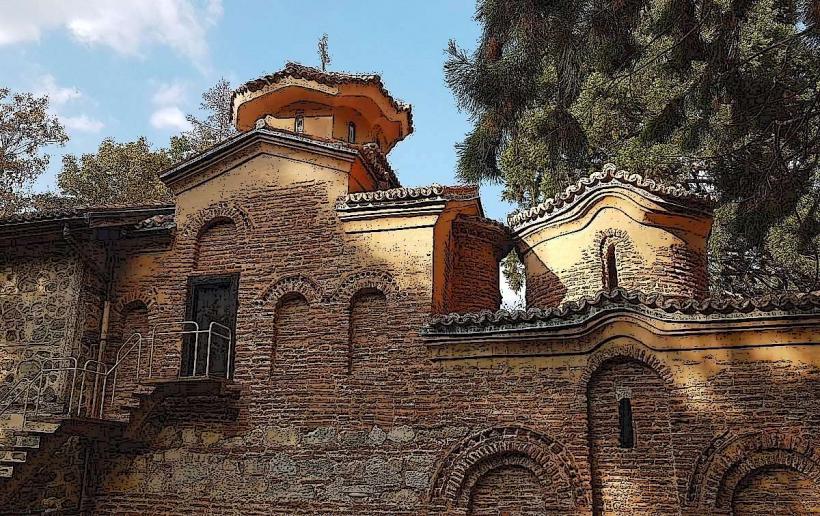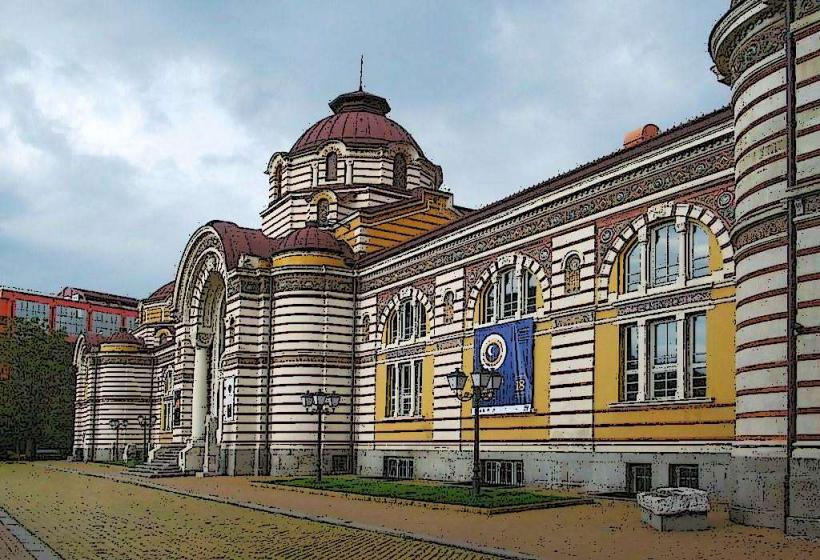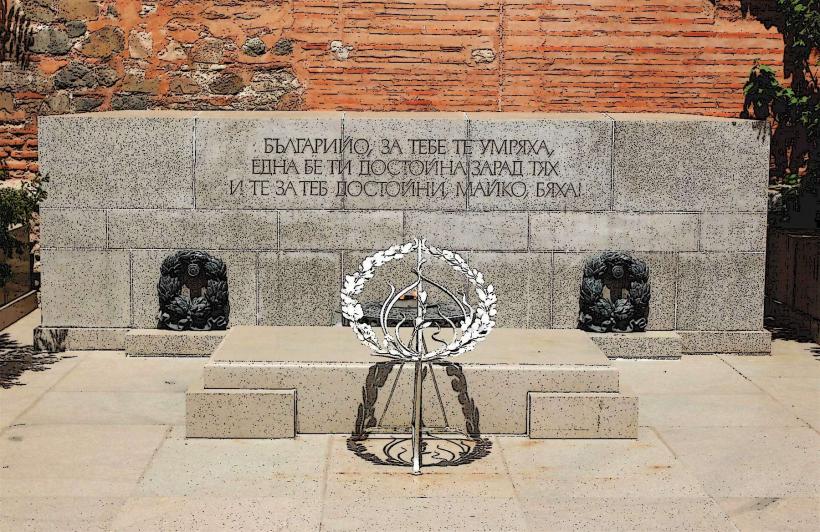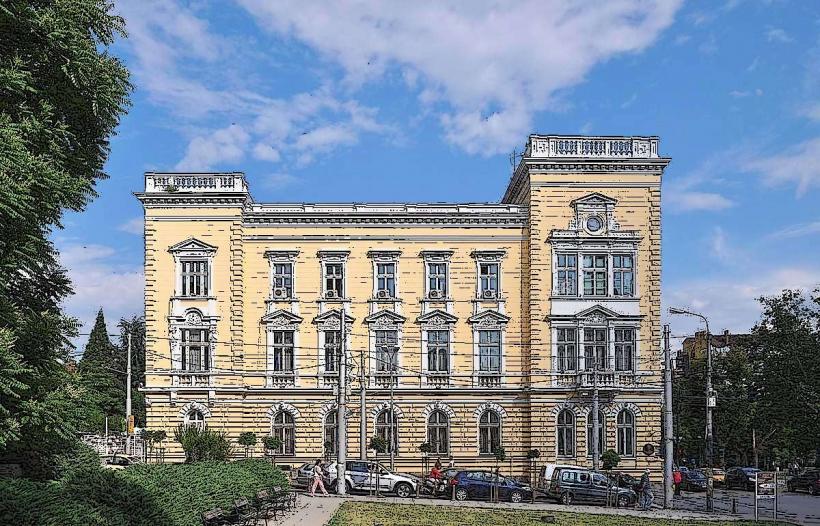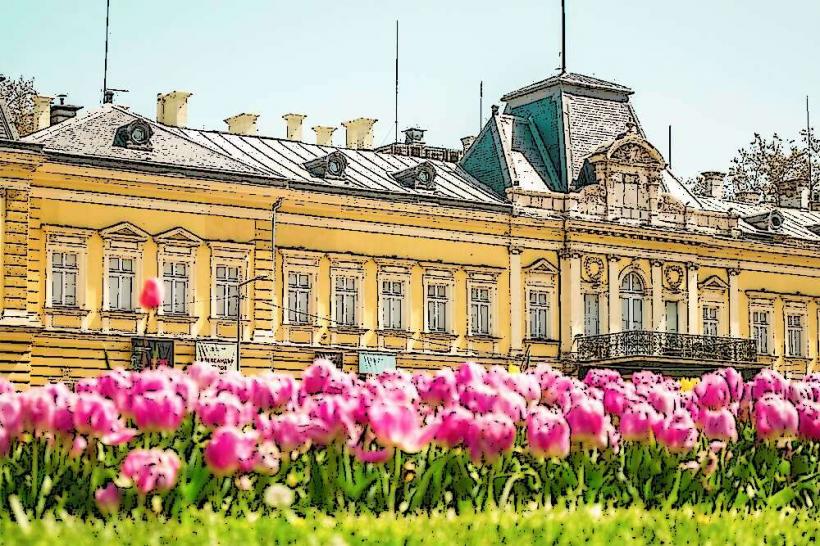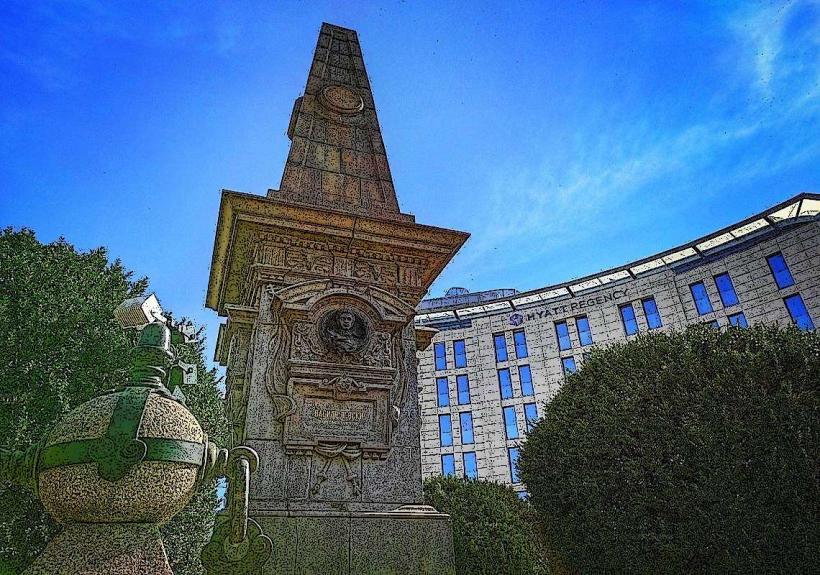Information
Landmark: Church of St SophiaCity: Sofia
Country: Bulgaria
Continent: Europe
The Church of St. Sophia in Sofia, Bulgaria, is a remarkable architectural and historical landmark that stands as one of the oldest churches in southeastern Europe. This basilica, from which the city of Sofia derives its name, has played a significant role in the region’s spiritual, cultural, and historical development for nearly two millennia.
Historical Overview
Early Beginnings
- The Church of St. Sophia was built in the 4th–6th centuries CE during the Byzantine Empire, on the site of older religious structures:
- It is believed to be constructed atop the ruins of earlier Roman temples and Christian churches, some of which date to the 2nd century CE.
- Archaeological evidence reveals that the site also housed a necropolis (cemetery) with Christian burials, indicating its early importance to the local Christian community.
Byzantine Period
- The current basilica, built in the 6th century during the reign of Emperor Justinian I, reflects the spread and establishment of Christianity in the region.
- It served as the city’s metropolitan cathedral and was a center of religious and administrative life.
- The basilica's name, Sophia, derives from the Greek word for "wisdom" and refers to Hagia Sophia (Holy Wisdom).
Medieval Bulgarian Period
- When Sofia became part of the First Bulgarian Empire in the late 9th century, the church continued to serve as a key religious site.
- In the Second Bulgarian Empire, it retained its prominence and witnessed various cultural and liturgical influences.
Ottoman Period
- After the Ottoman conquest of Sofia in 1382, the Church of St. Sophia was converted into a mosque.
- Minarets were added, and Christian frescoes were plastered over. Despite these changes, the structure retained its architectural integrity.
- The mosque suffered severe damage due to earthquakes in the 19th century, leading to its eventual abandonment as a place of worship.
Modern Period
- The building was restored in the early 20th century and reconsecrated as an Orthodox Christian church in 1930.
- Today, it is an active church and a symbol of Sofia’s historical resilience and spiritual heritage.
Architectural Features
The Church of St. Sophia is an outstanding example of Byzantine architecture, with notable features including:
Basilica Design:
- It has a three-nave basilica layout, characteristic of early Christian architecture.
- The structure is built with red bricks and features a simple yet elegant design.
Mosaics and Frescoes:
- The church originally had elaborate floor mosaics with geometric and floral patterns, remnants of which have been preserved and are visible today.
- Although many frescoes were destroyed or covered during the Ottoman period, some fragments have been uncovered during restoration.
Crypt and Necropolis:
- Beneath the basilica lies a necropolis containing over 50 ancient Christian tombs, sarcophagi, and mosaics.
- These findings, accessible via the underground museum, provide invaluable insight into early Christian burial practices.
Resilience Against Earthquakes:
- The structure's longevity is attributed to its innovative engineering, including solid masonry and earthquake-resistant techniques.
Cultural and Religious Significance
- The Church of St. Sophia played a pivotal role in Sofia’s identity as a spiritual and cultural hub.
- Its resilience through invasions, conversions, and natural disasters symbolizes the continuity of faith and history in Bulgaria.
- The basilica's name inspired the city’s modern name, Sofia, replacing its earlier Roman name, Serdica.
Tourism and Legacy
Visitor Experience:
- Tourists can explore the crypt museum, showcasing ancient tombs, inscriptions, and mosaics.
- The church is part of Sofia’s cultural triangle, along with the Alexander Nevsky Cathedral and the National Art Gallery.
Symbol of Sofia:
- The Church of St. Sophia is featured in many cultural and historical narratives about the city.
- It remains an active place of worship and a site for significant religious ceremonies.
UNESCO Tentative List
- The Church of St. Sophia, along with the surrounding early Christian necropolis, is part of Bulgaria's tentative list for UNESCO World Heritage status, highlighting its historical and architectural importance.
The Church of St. Sophia stands as a timeless witness to Sofia's evolving history, embodying the city's transformation from a Roman provincial capital to a modern European capital while maintaining its spiritual significance.

